Abstract
Magnetic resonance imaging was used to measure the effect of inhalation of 7% CO2 and hyperventilation with 60% O2 on human cranial cerebrospinal fluid volume. During CO2 inhalation there was a reduction in the cranial CSF volume ranging from 0.7-23.7 ml (mean 9.36 ml). The degree of reduction in cranial CSF volume was independent of the individual subject's increase in end-expiratory pCO2 or mean arterial blood pressure, in response to hypercapnia. During hyperventilation with high concentration oxygen the cranial CSF volume increased in all subjects (range 0.7-26.7 ml, mean 12.7 ml). The mean changes in cranial CSF volume, induced by hypercapnia and hypocapnia, were very similar to the expected reciprocal changes in cerebral blood volume.
Full text
PDF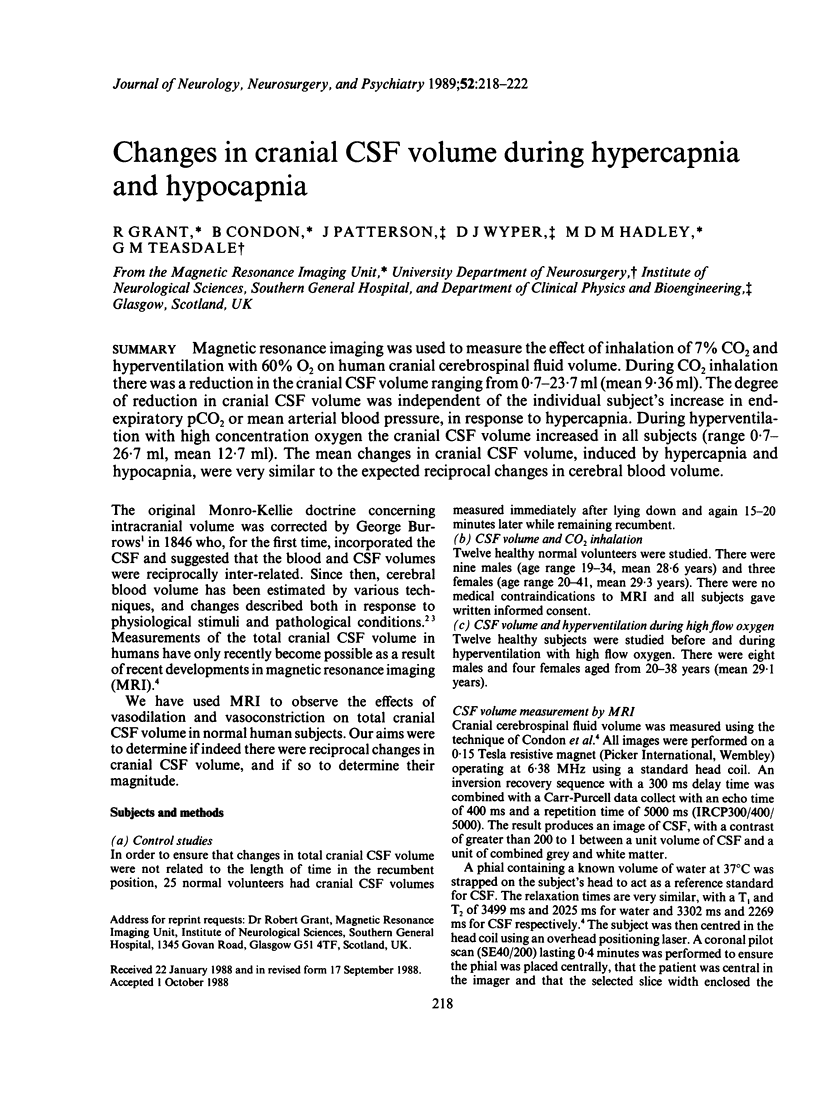
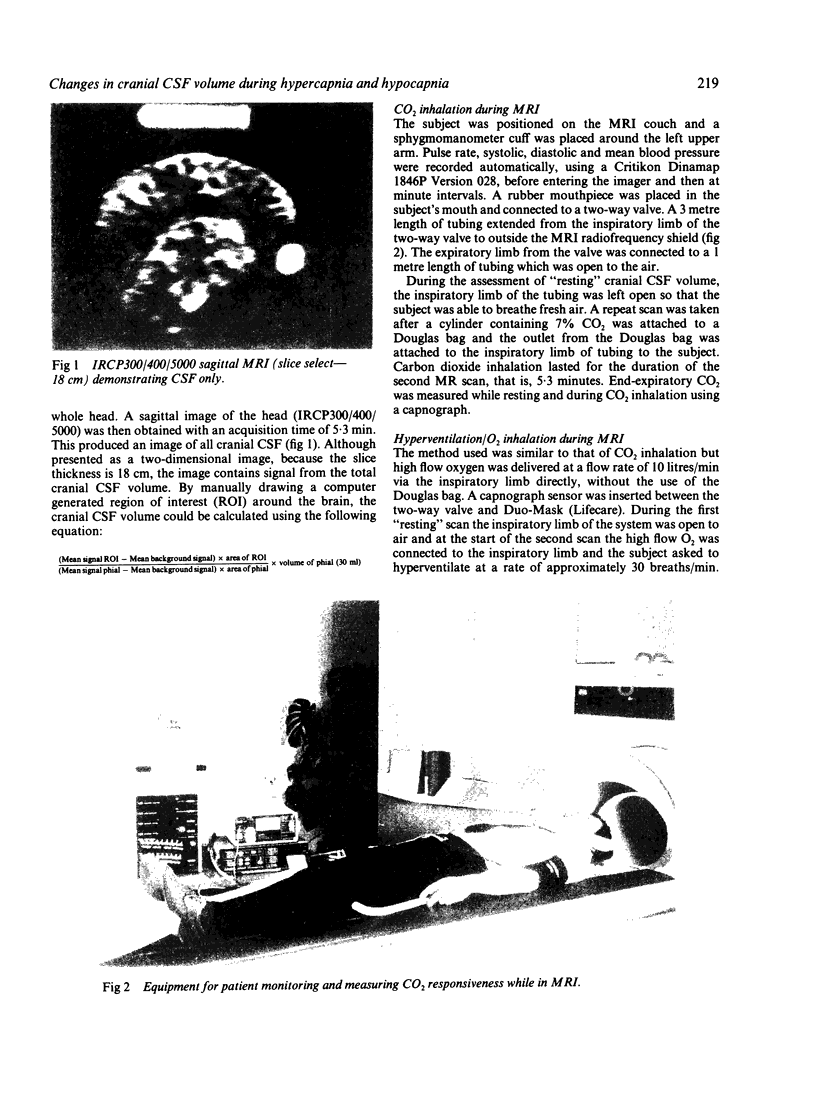
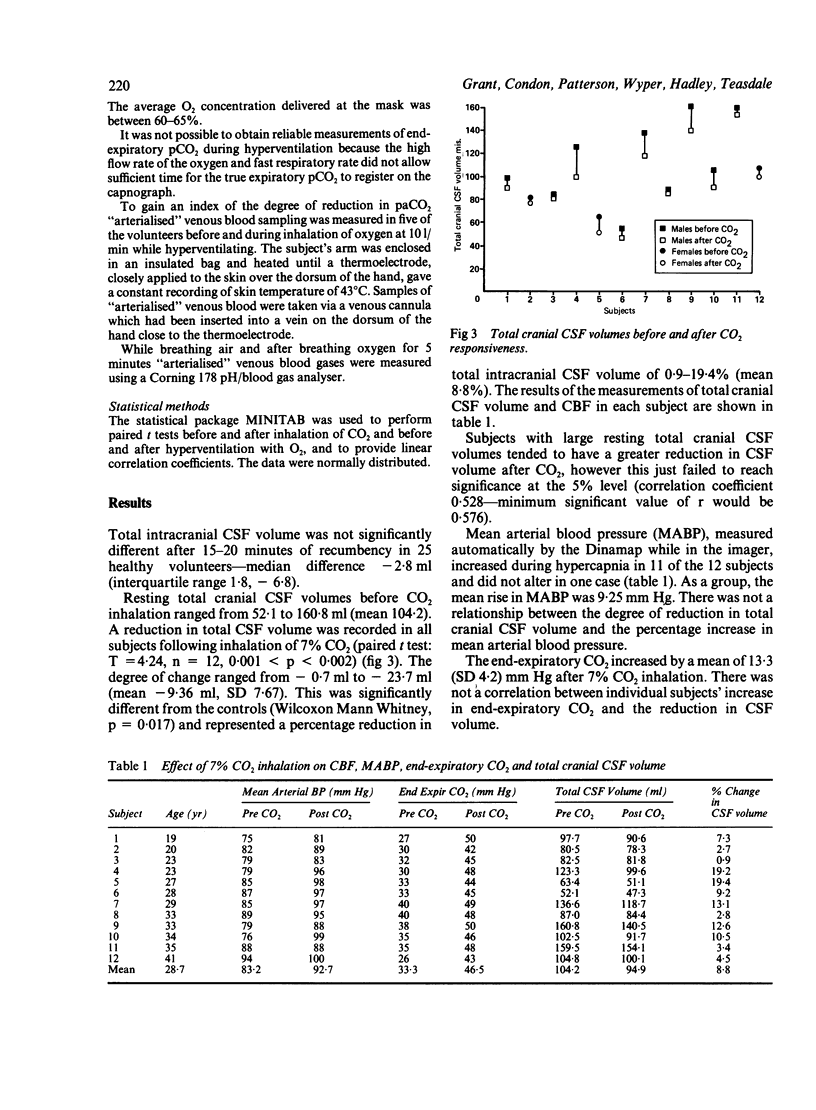
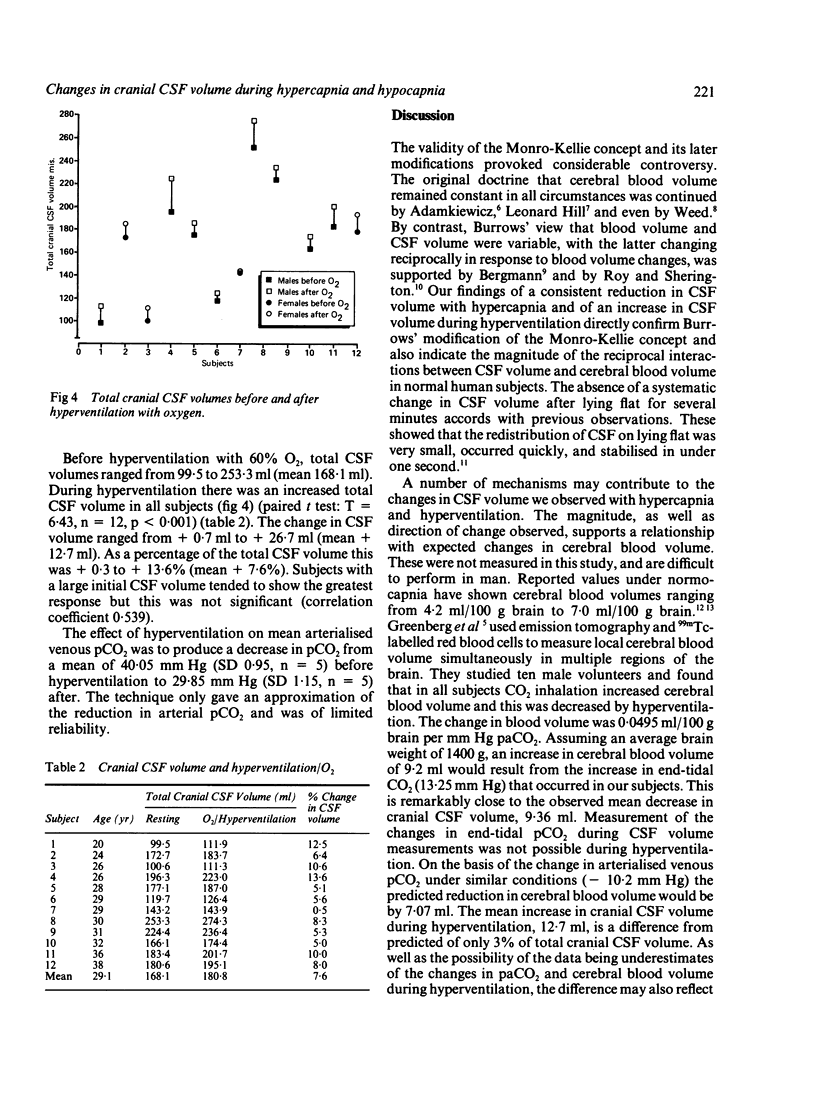
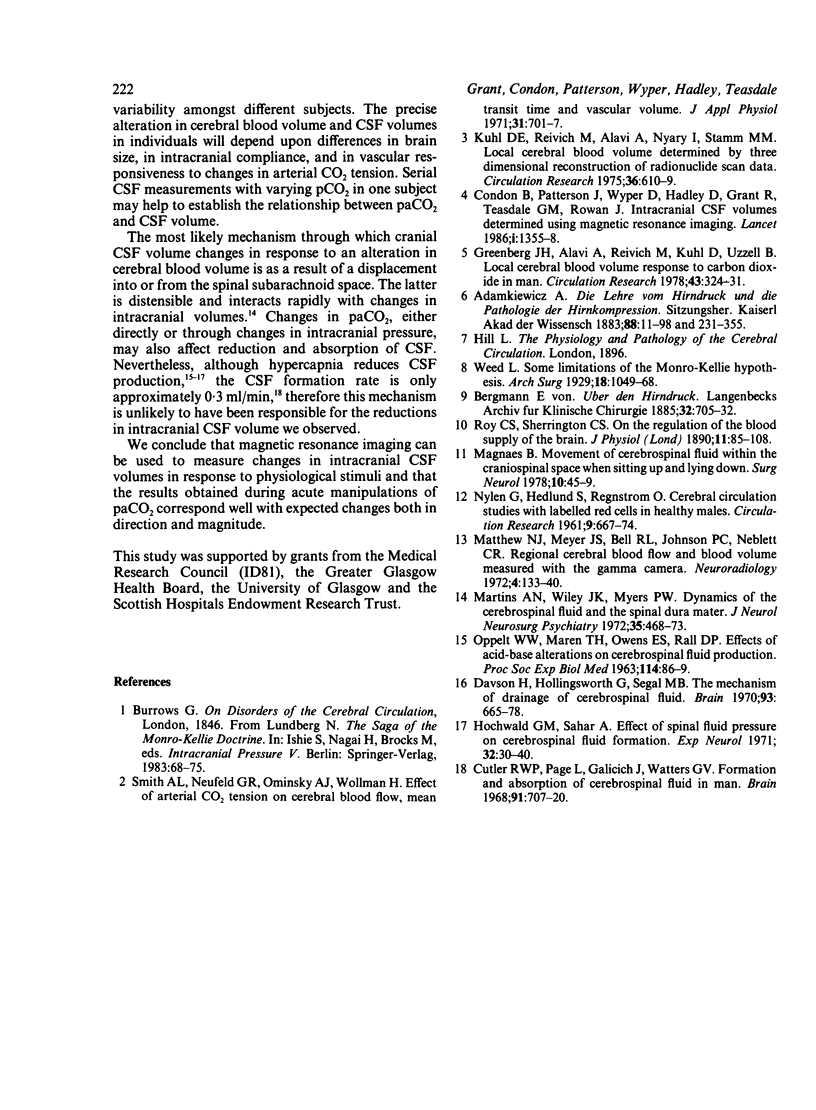
Images in this article
Selected References
These references are in PubMed. This may not be the complete list of references from this article.
- Condon B., Patterson J., Wyper D., Hadley D., Grant R., Teasdale G., Rowan J. Use of magnetic resonance imaging to measure intracranial cerebrospinal fluid volume. Lancet. 1986 Jun 14;1(8494):1355–1357. doi: 10.1016/s0140-6736(86)91666-1. [DOI] [PubMed] [Google Scholar]
- Cutler R. W., Page L., Galicich J., Watters G. V. Formation and absorption of cerebrospinal fluid in man. Brain. 1968;91(4):707–720. doi: 10.1093/brain/91.4.707. [DOI] [PubMed] [Google Scholar]
- Davson H., Hollingsworth G., Segal M. B. The mechanism of drainage of the cerebrospinal fluid. Brain. 1970;93(4):665–678. doi: 10.1093/brain/93.4.665. [DOI] [PubMed] [Google Scholar]
- Greenberg J. H., Alavi A., Reivich M., Kuhl D., Uzzell B. Local cerebral blood volume response to carbon dioxide in man. Circ Res. 1978 Aug;43(2):324–331. doi: 10.1161/01.res.43.2.324. [DOI] [PubMed] [Google Scholar]
- Hochwald G. M., Sahar A. Effect of spinal fluid pressure on cerebrospinal fluid formation. Exp Neurol. 1971 Jul;32(1):30–40. doi: 10.1016/0014-4886(71)90162-2. [DOI] [PubMed] [Google Scholar]
- Kuhl D. E., Reivich M., Alavi A., Nyary I., Staum M. M. Local cerebral blood volume determined by three-dimensional reconstruction of radionuclide scan data. Circ Res. 1975 May;36(5):610–619. doi: 10.1161/01.res.36.5.610. [DOI] [PubMed] [Google Scholar]
- Magnaes B. Movement of cerebrospinal fluid within the craniospinal space when sitting up and lying down. Surg Neurol. 1978 Jul;10(1):45–49. [PubMed] [Google Scholar]
- Martins A. N., Wiley J. K., Myers P. W. Dynamics of the cerebrospinal fluid and the spinal dura mater. J Neurol Neurosurg Psychiatry. 1972 Aug;35(4):468–473. doi: 10.1136/jnnp.35.4.468. [DOI] [PMC free article] [PubMed] [Google Scholar]
- Mathew N. T., Meyer J. S., Bell R. L., Johnson P. C., Neblett C. R. Regional cerebral blood flow and blood volume measured with the gamma camera. Neuroradiology. 1972 Oct;4(3):133–140. doi: 10.1007/BF00327578. [DOI] [PubMed] [Google Scholar]
- OPPELT W. W., MAREN T. H., OWENS E. S., RALL D. P. EFFECTS OF ACID-BASE ALTERATIONS ON CEREBROSPINAL FLUID PRODUCTION. Proc Soc Exp Biol Med. 1963 Oct;114:86–89. doi: 10.3181/00379727-114-28593. [DOI] [PubMed] [Google Scholar]
- Roy C. S., Sherrington C. S. On the Regulation of the Blood-supply of the Brain. J Physiol. 1890 Jan;11(1-2):85–158.17. doi: 10.1113/jphysiol.1890.sp000321. [DOI] [PMC free article] [PubMed] [Google Scholar]
- Smith A. L., Neufeld G. R., Ominsky A. J., Wollman H. Effect of arterial CO 2 tension on cerebral blood flow, mean transit time, and vascular volume. J Appl Physiol. 1971 Nov;31(5):701–707. doi: 10.1152/jappl.1971.31.5.701. [DOI] [PubMed] [Google Scholar]




